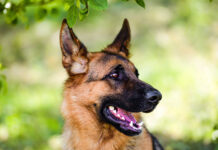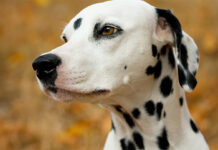Last Updated on April 7, 2021
Regardless of which dog breed is your little furry friend, they all have equal chances of getting frostbite. However, the breeds that are made for the cold, like Alaskan Malamute and Siberian Husky, are less likely to get it due to their thick fur. But in general, if it’s cold for you, then it’s too cold for your dog.
2. Signs of frostbite in dogs
- Skin color changes: You have to keep an eye on the skin color of your furry friend. When a dog is overexposed to cold weather, the skin will become very pale to the point of having a bluish-white pallor because of the lack of blood flow. When frostbite is severe, the skin could turn black while the tissue underneath die.
- Skin sensitivity: the affected skin will be extremely cold to touch and painful for the dog when touched.
- Ice forming: when some areas are affected by frostbite, they will start ice form around them.
Keep in mind that when the dog is out of the cold and starts getting warm, blood will begin to flow into the area, which can be a painful experience. The skin gets swollen and red, and the affected area might start peeling, form skin ulcers or blisters,





















